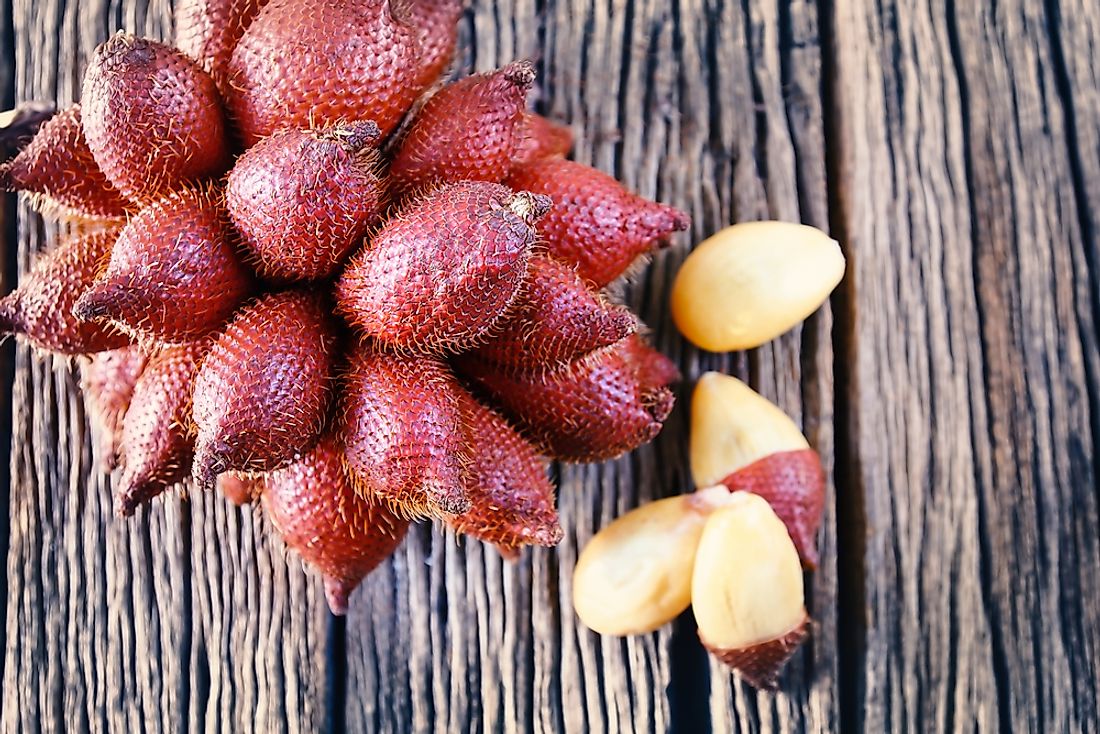What Is Salak (Snake Fruit)?

Salak fruit, also commonly known as snake fruit, is a fruit obtained a species of palm tree. The salak tree belongs to the taxonomic family Arecaceae. It is originally from Java and Sumatra in Indonesia. However, the species is also cultivated in other regions apart from Java and Indonesia. Its cultivation and use are mainly popular in Southeast Asia. Thailand, Malaysia, and Indonesia are the top cultivators of snake fruit. Its cultivation is mainly for subsistence purposes.
Salak Fruit
The salak fruits develop at the base of the tree. Their development is usually in clusters. The outermost surface of the salak fruit is usually reddish-brown and scaly, just like a snake’s skin, the reason why it is also referred to as snake fruit. The skin has prickles, almost similar to those of cacti. The size and shape of salak fruits are almost similar to that of a ripe fig fruit. The inside contains an edible pulp and an inedible seed. The pulp is divided into three lobes, each containing a large seed. The edible parts of the fruit are sweet and acidic, with a smooth and fluffy texture, which is similar to the texture of an apple.
Salak Tree
The salak plant is usually evergreen. The palm is very short, with long leaves that can measure up to six meters. The leaf and the leaf sheath have black spines. The plant is dioecious. The male flowers are reddish in color with tubular corolla and a tiny pistillode. The female flowers are usually yellowish-green on the outside and, dark red on the interior. The flowers are paired on axil of scale.
The dioecious monocotyledonous plant develops by successive branching from the stem’s base. The superficial roots do not develop deep in the soil. The internodes are usually short and crowded. During its cultivation, the plant tends to thrive more in shady areas than under direct sunlight. Salak fruits reach maturity between five and eight months after pollination takes place. The trees are usually productive all year round. However, the peak season for the production the fruit is usually between May and December. The harvesting is usually done just before the fruits fully ripen.
Health Benefits of Salak
The salak fruit is of high nutritive value. It is known to be a remedy for a number of disorders. The key nutrients in the salak fruit include iron, phosphorous, calcium, fats, carbohydrates, vitamin B, and vitamin C. Salak contains at least five times more beta-carotene than that contained in most fruits. Beta-carotene is a superior antioxidant. It is also good for the prevention of cancer and cardiovascular diseases, for strong eyesight and optical health, and for treatment of stomach ailments such as indigestion and diarrhea. Other major benefits of salak are memory booster and weight loss benefits. Pregnant women are also encouraged to take the salak fruit for maintenance of a steady blood sugar level during pregnancy.











